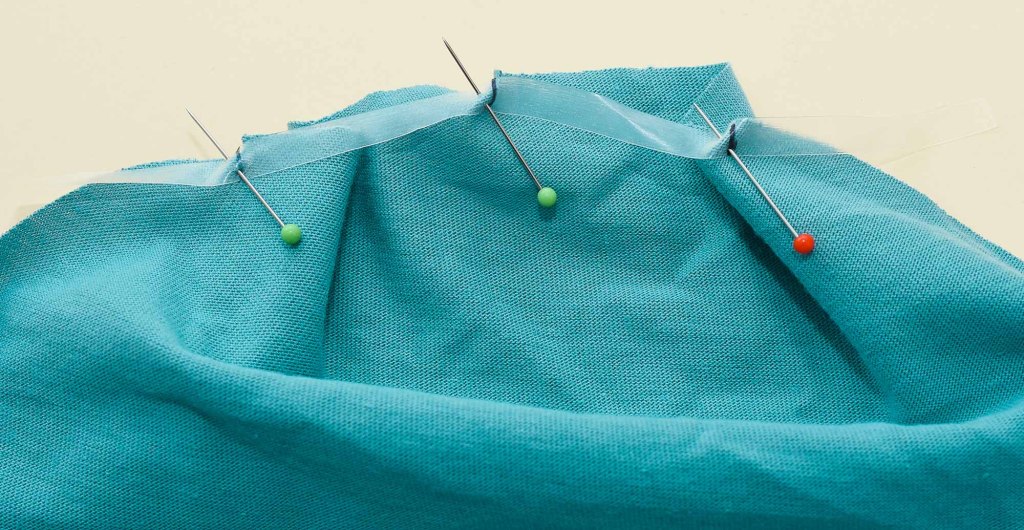
Have you tried using clear elastic for your sewing? It’s a lightweight transparent elastic that can be used for any area that needs stabilisation; shoulder seams, pocket openings, necklines, leg openings on swimwear, waistband and plenty more. Non-bulky and discrete + it has fantastic stretch and recovery.
So let’s take look at some fabulous uses for this versatile notion!
Stabilising shoulder seams on knit tops

Have you noticed that shoulder seams on knit tops tend to expand if you don’t use a stabiliser to keep them in check? Since the fabric is so stretchy and cut on the diagonal (bias) at the shoulder, it’s very common for the shoulder seam to grow. Both when you sew the seam and wear the garment.
There are many ways to stabilise the shoulder seams on knits, but the advantage of using clear elastic as the stabiliser is that you retain the stretch with 100% recovery.

The width is also around the same as most serger and sewing machine overlock seams, so you can easily cover the entire elastic with the shoulder seam.
Check out my step-by-step tutorial on how to use clear elastic to stabilise shoulder seams
Sewing the neckline on knit tops

Clear elastic is an excellent choice for round necklines on stretchy knits because the elastic prevents the neckline from stretching out when sewn and worn.

You simply attach the elastic inside the seam allowance and then topstitch over the neckline to keep the fold in place.

You can of course use the same method for leg openings on swimwear and underwear.

In my book Sewing Activewear I have a step-by-step tutorial on how to do this technique if you want to learn more about how it’s done.
Get clear elastic on Amazon (affiliate link)
Inside the waistband when sewing leggings

When sewing leggings you’ll need to add some type of elastic at the top of the waistband. Otherwise, they’ll likely ride down as soon as you start moving around!

The elastic is attached at the top seam allowance, and the clear elastic is so thin that you’ll get a very smooth waistband without any bulk, which can be the case when using regular thick elastic.

Check out my tutorial on How to Sew a Leggings Waistband to learn how to attach the elastic.
For sewing gathers on knits

This is a very common method in RTW since it makes it easy to create even gathers that can also be stretched out, unlike a lot of gathering techniques that we home sewists often use.

So what you do is to use a strip of clear elastic that has the same length as the finished gathered area, with some extra on the side for easy application, I like to use a longer strip and then mark the beginning and the end on.

Then you stretch the elastic out while sewing so that it has the same length as the ungathered fabric. And then voilá, you have an evenly gathered fabric.

Step-by-step tutorial: How To Sew Gathers on Knit Fabrics.
Stabilising horizontal seams on knits
If you are sewing a knit dress with a horizontal waist seam, you have probably noticed that the seam tends to drop a bit or even get a bit saggy and stretched out.

You can prevent this problem by adding clear elastic to the waist seam allowance, which I did with this wrap dress.


Since clear elastic is so narrow and thin, you will easily cover the entire elastic with the overlock stitch. Just remember to place the elastic on the side facing the fabric so the elastic won’t chafe on your body.
I hope you got excited to give this notion a try if you haven’t already. I personally make sure that my stash is never without a roll of clear elastic.
Get clear elastic on Amazon (affiliate link)


